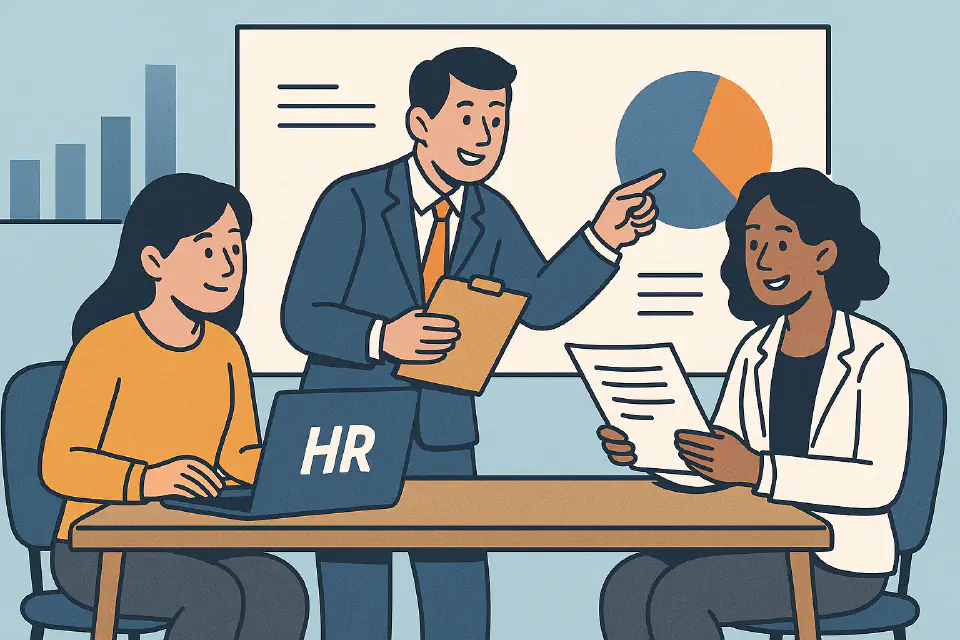
HR as a Change Agent
In a world of constant transformation, HR’s ability to act as a change agent is more vital than ever. This page explores the theory, models, and practical approaches that empower HR to lead and sustain organizational change.
Why Change Matters — and Why HR Must Lead It
Change is no longer a project with a defined start and end. In today’s volatile, uncertain, complex, and ambiguous (VUCA) environment, change is continuous. Organizations that fail to adapt face disruption, talent flight, or stagnation.
HR is uniquely positioned to act as the architect and catalyst of change, ensuring that transformations are not only designed but also embraced, sustained, and embedded into culture.

Theoretical Foundations of HR as a Change Agent
1. Kotter’s 8-Step Change Model
John Kotter’s classic framework remains a foundational approach:
- Create a sense of urgency
- Build a guiding coalition
- Form a strategic vision and initiatives
- Enlist a volunteer army
- Enable action by removing barriers
- Generate short-term wins
- Sustain acceleration
- Institute change
HR plays a role at every step — from communicating urgency to embedding new behaviors.
2. Lewin’s Change Management Model
Lewin’s model simplifies change into:
- Unfreeze: Challenging status quo
- Change: Implementing new ways of working
- Refreeze: Embedding new behaviors as the norm
HR supports unfreezing (awareness campaigns), facilitates change (training, support), and reinforces refreezing (policies, recognition).
3. ADKAR Model (Prosci)
Focuses on individual transitions:
- Awareness
- Desire
- Knowledge
- Ability
- Reinforcement
HR is key in designing interventions that move employees through these phases.
4. Agile & Continuous Change Models
Modern approaches (like Agile Change Management) emphasize:
- Iterative, adaptive change cycles
- Employee-driven feedback loops
- Embedding change into daily rituals and teams
The Roles & Responsibilities of HR as a Change Agent
HR’s responsibilities as a change agent span multiple dimensions:
🟢 Strategic Change Leadership
- Shaping change narratives
- Ensuring change aligns with strategy and values
- Advising leadership on change readiness and risks
🟢 Stakeholder Engagement
- Mapping key stakeholder groups
- Designing inclusive engagement strategies
- Running listening sessions, feedback loops, and co-creation forums
🟢 Communication & Storytelling
- Crafting authentic, people-centered messages
- Equipping managers with communication toolkits
- Using multiple channels to build transparency and trust
🟢 Capability Building
- Designing learning programs to support new ways of working
- Building leadership capacity for change resilience
- Supporting managers as change leaders
🟢 Culture Shaping
- Embedding change in rituals, symbols, and recognition
- Challenging behaviors that resist change
- Reinforcing new norms through policies and incentives
🟢 Measurement & Sustainability
- Tracking adoption, engagement, and behavior change
- Identifying barriers and enabling course correction
- Ensuring continuous reinforcement, not one-off events
Real-World Examples of HR as Change Agent
Case 1: Agile Transformation in a Bank
HR led an agile transformation in a traditional bank:
- Redesigned performance management for agility
- Created “agile mindset” training for all leaders
- Embedded cross-functional squads and empowered teams
Result: Increased speed of delivery by 30%. Boosted employee engagement scores in innovation and autonomy.
Case 2: Merging Two Cultures Post-Acquisition
HR designed culture integration playbooks:
- Identified shared values and cultural gaps
- Led cross-team storytelling sessions
- Designed rituals (e.g. leadership fireside chats)
Result: Faster cultural alignment and reduced turnover in critical teams.
Case 3: Building Change Capability in Managers
HR noticed managers blocking change due to fear and lack of tools:
- Ran manager-as-change-leader bootcamps
- Built peer coaching groups
- Created micro-learning videos on change conversations
Result: 85% of managers reported higher confidence in leading change. Employee change adoption improved.
Why HR Often Fails in Change Agent Role
Common reasons HR struggles to lead change:
- Lack of credibility with leadership
- Being brought in too late (after decisions are made)
- Over-focusing on communication, ignoring capability and culture
- Underestimating resistance and change fatigue
Critical Skills for HR as a Change Agent
| Skill | Why It Matters |
|---|---|
| Influence & Persuasion | HR must bring leaders and skeptics on board |
| Facilitation | Driving dialogue, feedback, and co-creation |
| Storytelling | Making change human and meaningful |
| Conflict Resolution | Navigating tension, fear, and uncertainty |
| Change Analytics | Measuring adoption, engagement, and barriers |
Best Practice: Embedding Change into Culture
Final Thought
Change is not a side project — it’s the oxygen of organizational survival. HR’s power as a change agent lies in its proximity to people, culture, and systems.
When HR acts as a true change leader, it doesn’t just manage transitions — it shapes futures.